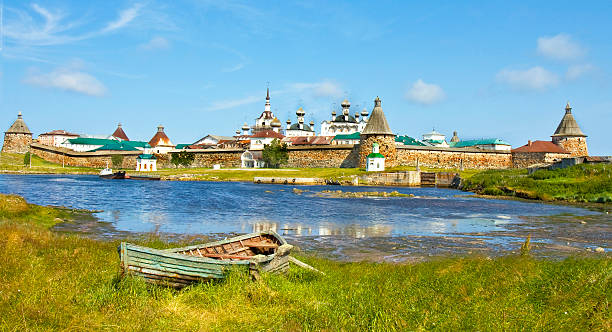Kizhi Island wooden architecture
Nestled in the heart of Lake Onega in Russia, Kizhi Island is a breathtaking open-air museum that showcases romantic wooden architecture like nowhere else. Home to the iconic Kizhi Pogost, this UNESCO World Heritage Site is a testament to Russia’s medieval craftsmanship, rich cultural history, and wooden architectural marvels.
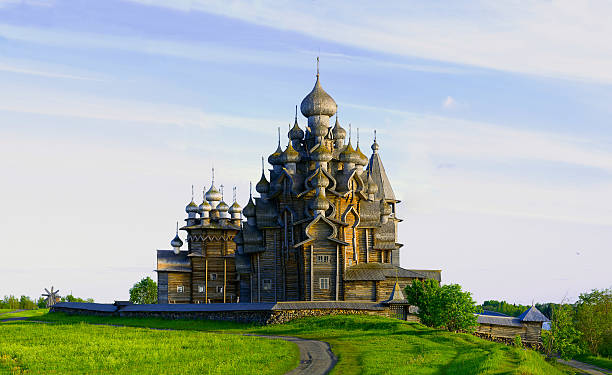
If you’re fascinated by historical landmarks, unique wooden structures, or cultural tourism, Kizhi Island should be on your travel bucket list. This article will take you through the island’s historical significance, famous attractions, and why it is an architectural wonder worth exploring.
—
The Historical Significance of Kizhi Island
Kizhi Island’s rich history dates back to the 14th century, but it gained prominence in the 17th and 18th centuries when its wooden churches and structures were constructed. The island is part of a network of over 1,600 islands in Lake Onega and has served as a religious, cultural, and trade center.
The Kizhi Pogost, the most famous architectural ensemble on the island, consists of:
The Church of the Transfiguration (1714) – A 22-dome masterpiece, constructed without a single nail.
The Church of the Intercession (1764) – A nine-dome wooden structure used for winter services.
The Bell Tower (19th century) – A wooden bell tower that complements the church ensemble.
These architectural wonders were built using traditional Russian carpentry techniques, making them one of the finest examples of wooden architecture in the world.
—
Kizhi Island Wooden Architecture: A Unique Marvel
1. Masterpiece of Wooden Construction
The wooden churches of Kizhi are famous for being built entirely from local pine and aspen wood, using an ancient interlocking technique instead of nails. This ensures the buildings remain durable despite harsh weather conditions.
The Church of the Transfiguration is the crown jewel of Kizhi Pogost. Its 22 onion domes, covered in silver-hued wooden shingles, change color depending on the light, creating a mesmerizing effect.
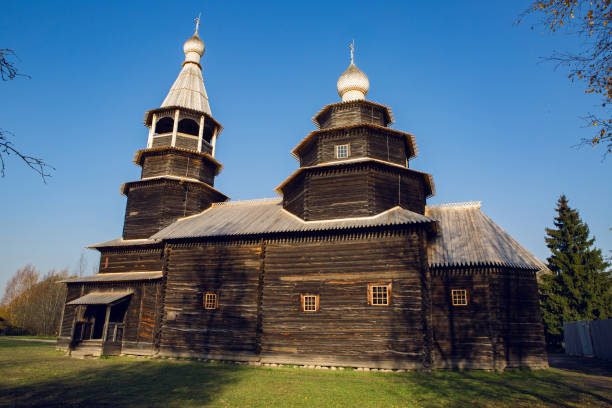
2. The Unique Architecture Without Nails
One of the most astonishing facts about Kizhi Island’s wooden structures is that they were built without a single nail. The traditional Russian log-building technique, called “skovorodnik”, involves interlocking logs to create sturdy and weather-resistant structures.
This technique has allowed the wooden churches and chapels to withstand centuries of severe Russian winters.
3. The Cultural Significance of Kizhi Pogost
The Kizhi Pogost is more than just an architectural marvel; it is a living testament to Russian heritage. It represents:
Russian Orthodox traditions
Medieval wooden craftsmanship
UNESCO-listed world heritage
Kizhi Pogost continues to attract architectural historians, tourists, and researchers from around the world.
—
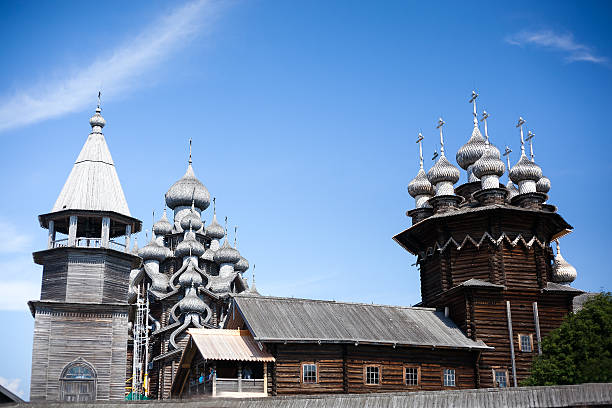
Why Visit Kizhi Island?
1. A UNESCO World Heritage Site
Declared a UNESCO World Heritage Site in 1990, Kizhi Island is one of the most significant wooden architectural sites in the world. Its preservation efforts ensure that future generations can admire its beauty.
2. A Photographer’s Paradise
Kizhi Island offers stunning landscapes, with the wooden domes reflecting in the serene waters of Lake Onega. Whether you visit during summer, autumn, or winter, the island provides breathtaking views for photography enthusiasts.
3. Unique Open-Air Museum Experience
The Kizhi Museum-Reserve showcases over 80 historic wooden structures, including:
Traditional Russian peasant houses
Wooden windmills
Rustic chapels and barns
This open-air museum gives visitors a chance to experience life in rural Russia centuries ago.
4. A Scenic Boat Ride to Kizhi Island
Getting to Kizhi Island is an adventure in itself! The most popular way to reach the island is via a hydrofoil boat ride from Petrozavodsk, offering spectacular views of Lake Onega.
—
Best Time to Visit Kizhi Island
The best time to visit Kizhi Island depends on the experience you want:
Summer (June to August): Warm temperatures, lush green landscapes, and vibrant festivals.
Autumn (September to October): Golden hues, fewer crowds, and a peaceful atmosphere.
Winter (December to March): A magical, snow-covered wonderland, perfect for a unique cultural experience.
—
The most convenient way to reach Kizhi Island is by boat from Petrozavodsk, the capital of Karelia. Options include:
Hydrofoil boats (summer only) – A fast and scenic way to reach the island.
Private tours – Guided boat tours offer an in-depth experience.
Winter travel – In winter, visitors can take a snowmobile or hovercraft ride across the frozen lake.
—
A Timeless Wooden Treasure
Kizhi Island is a true gem of wooden architecture, transporting visitors back in time to Russia’s medieval past. Whether you’re an architecture enthusiast, a history lover, or a traveler seeking off-the-beaten-path destinations, Kizhi Island is an unforgettable journey into the world of wooden wonders.
Visiting this UNESCO-listed site is a rare opportunity to witness the artistry of wooden craftsmanship, admire breathtaking landscapes, and experience Russia’s rich cultural heritage firsthand.
Ready to Explore Kizhi Island?
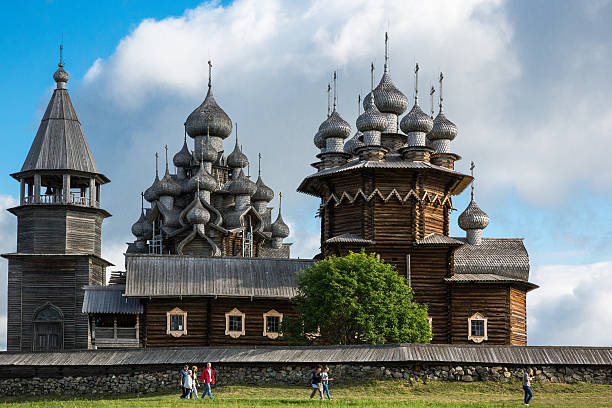
Plan your visit today and step into a living museum of romantic wooden architecture!

